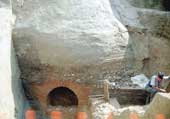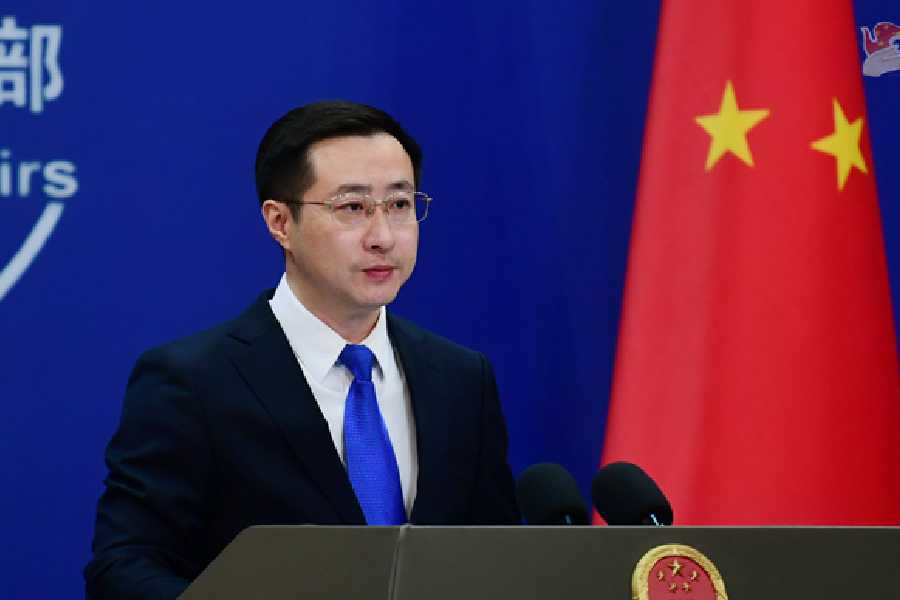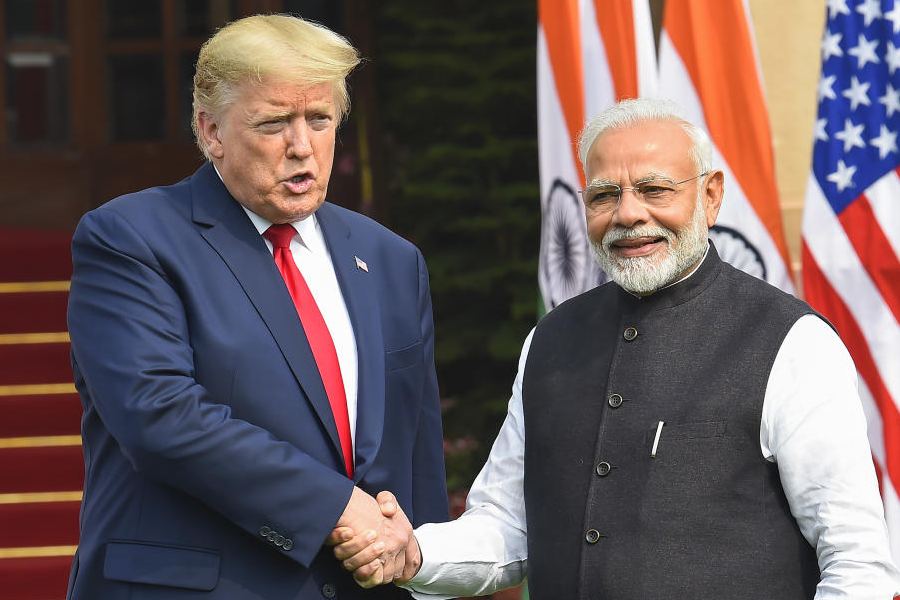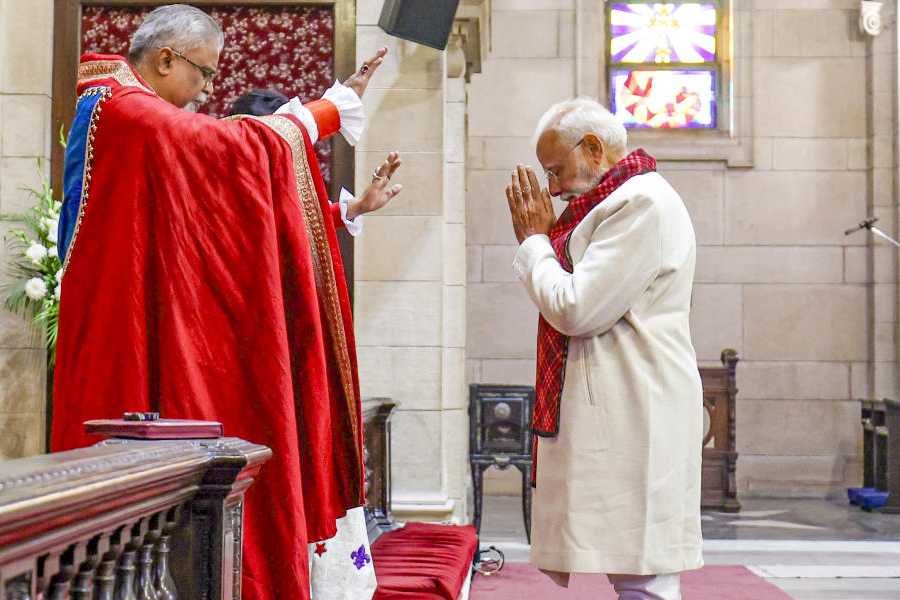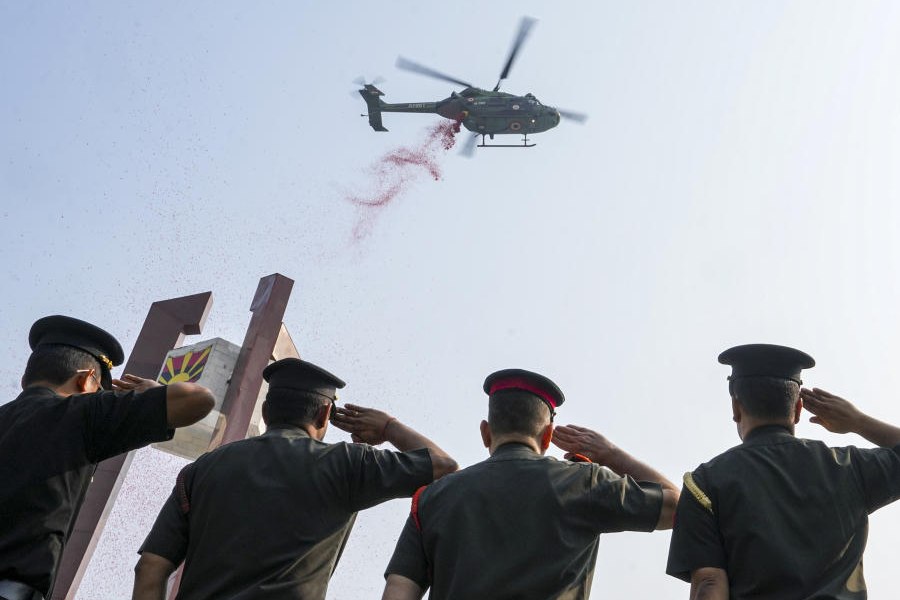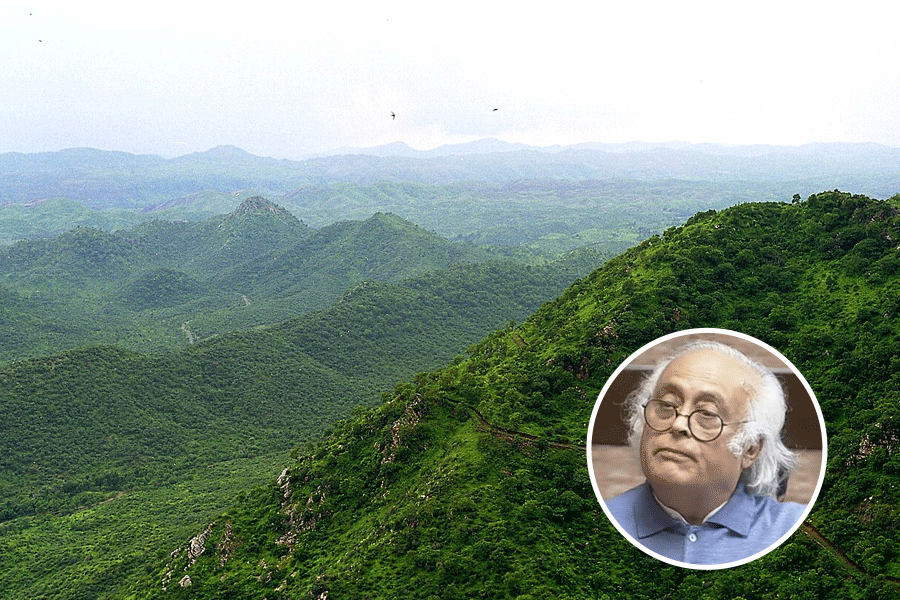 |
| An ASI worker engaged in excavation at Charaideo and (inset) some of the artefacts recovered. Pictures by Ripunjoy Das |
Charaideo (Sivasagar), Feb. 28: Archaeologists involved in the first-ever excavation of the burial ground of Ahom kings at Charaideo have discovered a secret: bounty hunters had been there before.
One of the telltale signs is a “crater” on top of the largest maidam, a pyramid-like structure above a grave.
Ashok Kumar Gupta, who is leading the Archaeological Survey of India (ASI)’s excavation team, told The Telegraph that somebody had probably entered the maidam “in search of treasure” during the British Raj. He said the presumption was based on evidence of vandalism by British treasure-hunters at historical sites elsewhere in the country.
Historians say gold and other valuables were buried with Ahom kings and nobles. The Ahoms ruled Assam from 1228 to 1826. Charaideo, the first capital of the Ahoms, has 42 maidams, which are often compared to the pyramids of Egypt. Of these, four are “taken care of” by the ASI and the rest by the state archaeology department.
The Ahoms used to bury their dead kings and nobles in coffins and erect an earthen mound of pyramidal shape over it. These mounds were hemispherical and varied in sizes, depending on the power and status of the individual who had been buried. The hemispherical mounds had octagonal enclosure walls, with entrances on the western side and brick structures on top. The biggest maidams are believed to be that of Ahom king Gadadhar Singha (1618-1696) and Rudra Singha (1696-1714).
The ASI, which has been digging the burial ground at Charaideo for several months now, has found a hemispherical dome in the style of Mughal architecture and a small passage closed with boulders. Over four metres of the passage, which probably leads to the inner sanctum, has been excavated.
The only things that have been recovered so far are skeletal remains and pieces of pottery. It has yet to be decided whether the maidam would be covered with soil again or left bare for tourists to see.
Gupta said work at the site would continue till the end of March.
“We have to find out which king the maidam belonged to. Then we will decide whether to cover up the monument again,” he said, adding that soil was the best preservative for protecting such monuments.
The ASI has been carrying out excavation simultaneously at the historic Kareng Ghar here. The team deployed at Charaideo, 30 km from the historical town of Sivasagar, hopes to unveil several secrets in the next few days.

